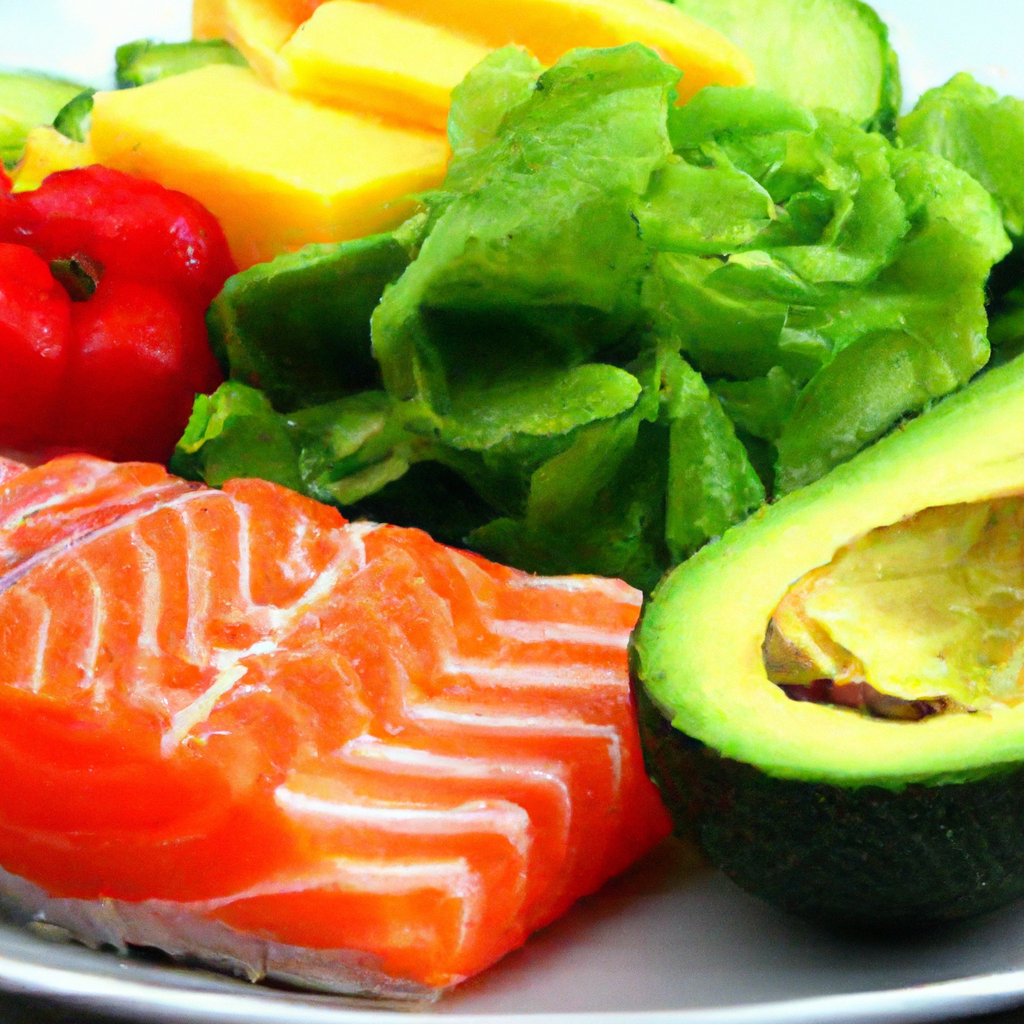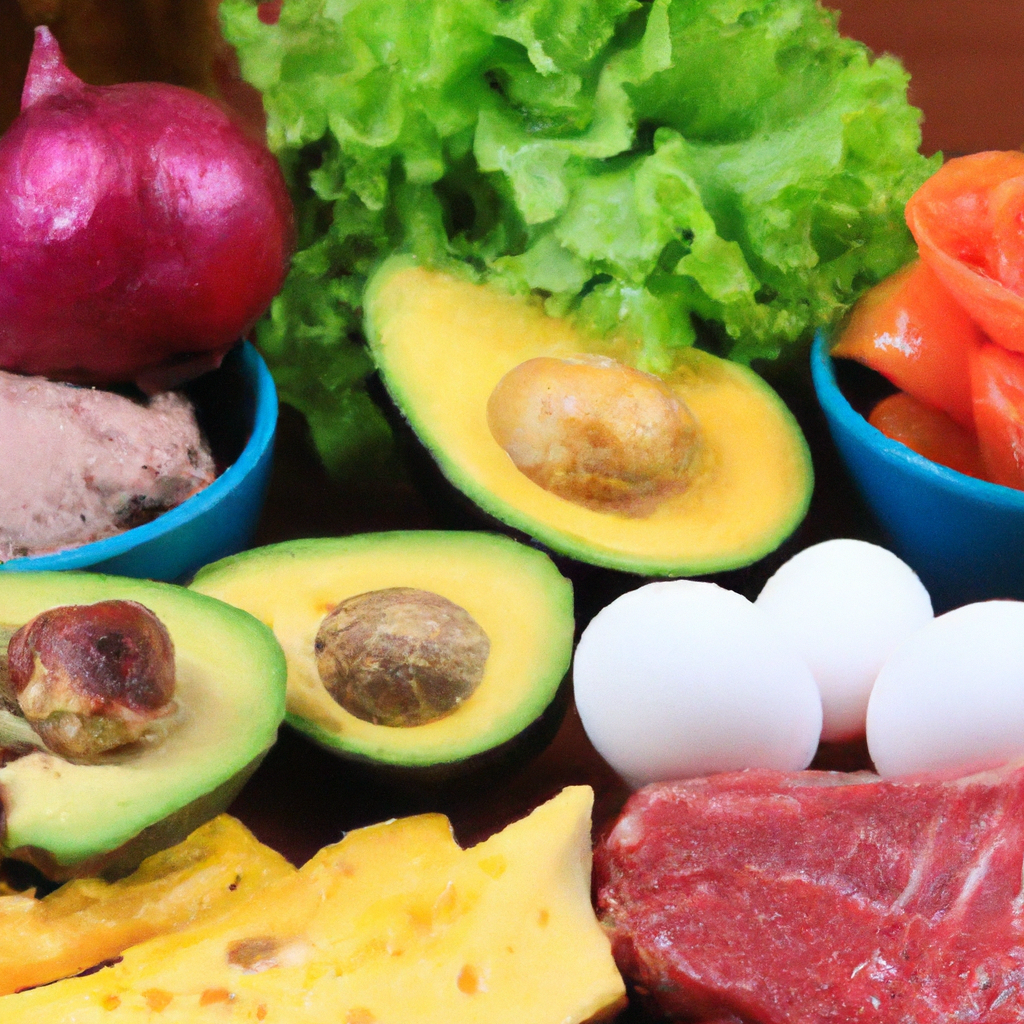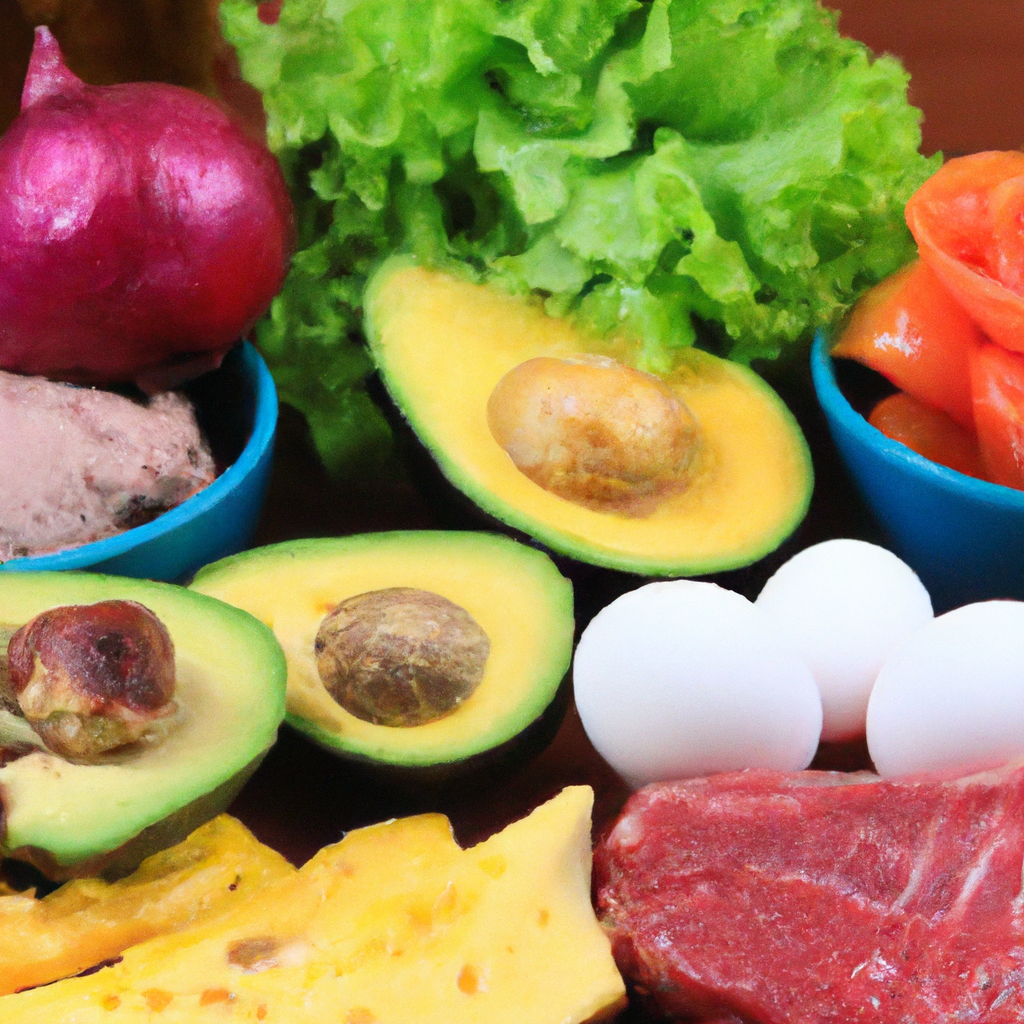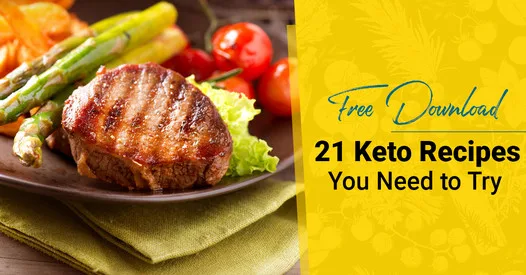So, you’ve probably heard of the popular Keto and Paleo diets, and you’re curious about what makes them different from each other. In the intricate world of nutrition and weight loss, these two buzzwords frequently make an appearance. Amidst all the hype, it can be a tad confusing to keep up with which one’s which. While both diets emphasize whole foods and reduced carb intake, they have distinct guidelines and propound different philosophies about what’s best for your body. Let’s chalk out the distinctions in “Understanding the Difference: Keto vs Paleo Diet”.

Understanding the Basics: What is a Keto Diet?
Before we delve into how the Keto diet compares to the Paleo diet, let’s first understand what exactly a Keto diet is.
Defining the Keto Diet
Essentially, the ketogenic diet, also known as the Keto diet, is a high-fat, low-carb diet that has been popular for its purported weight loss benefits. The main goal of this diet is to get your body into a metabolic state known as ketosis. Now you might be wondering, what exactly is ketosis? Don’t worry; we’ll get to that next.
The Science Behind Ketosis
Ketosis is a metabolic state where your body doesn’t have enough carbohydrates from the food you eat for your cells to burn for energy. Hence, your body starts to burn fat instead. This results in the production of molecules called ketones, which can be used as a source of fuel. When your body is in a state of ketosis, it becomes incredibly efficient at burning fat for energy.
Typical Foods Included in a Keto Diet
The Keto diet involves drastically reducing your intake of carbs and replacing them with fats. This means that foods like red meat, fatty fish, cheese, butter, eggs, nuts, and seeds are staple items on this diet. On the other hand, foods that are high in carbs—like grains, fruits, legumes, and root vegetables—are limited or completely excluded.
Popularity and Adoption of the Keto Diet
The Keto diet has gained popularity over the years and has been adopted by many people seeking to lose weight. The diet has promising results when it comes to rapid weight loss, leading to its adoption by many people from different walks of life.
Understanding the Basics: What is a Paleo Diet?
Now that you have a basic understanding of what a Keto diet is, let’s move on to the Paleo diet.
Defining the Paleo Diet
The paleolithic diet, popularly known as the Paleo diet, is based on the hypothesis that our bodies are genetically mismatched to the modern diet and that’s why chronic diseases are on the rise. This diet is built around foods believed to have been eaten during the Paleolithic era, which ended about 10,000 years ago.
The Hypothesis Behind the Paleo Diet
The Paleo diet theory argues that our bodies are better adapted to the diet of our early ancestors. Their diet consisted of foods that could be hunted or gathered, like lean meats, fish, fruits, vegetables, seeds, and nuts. Cereal grains, legumes, and dairy products — staples in our daily diet — were absent during the Paleolithic era, hence excluded from this diet.
Common Foods in a Paleo Diet
Since the Paleo diet emulates the eating habits of our hunter-gatherer ancestors, it involves eating whole foods and avoiding processed ones. Foods included in this diet span across lean meats, fish, fruits, vegetables, nuts, and seeds. Foods to avoid include anything processed, grains, legumes, and dairy products.
Why People Adopt the Paleo Diet
The reason many people prescribe to the Paleo diet is due to its simplicity – there’s no need to track nutrients or measure portions. The fact that it includes whole, unprocessed foods also leans towards the diet’s healthiness.
Key Differences: Carbohydrate Intake
At first glance, the Keto and Paleo diets may seem quite similar, but their approach to carbohydrates is quite different.
Carbohydrate Limits in Keto Diet
The Keto diet heavily restricts carbohydrate intake, replacing it with fats. Typically, the carbohydrate intake is limited to just 5-10% of the total daily calories, with many individuals consuming less than 50g of carbohydrates per day.
Carbohydrate Consumption on Paleo Diet
The Paleo diet, on the other hand, does not involve counting carbs, but instead encourages the avoidance of refined carbohydrates and sugars. While it limits the intake of grains and legumes, it allows the consumption of other groups of carbohydrates like fruits and vegetables.
The Role of Carbohydrates in Each Diet
In essence, while both diets limit carbohydrate consumption, the Keto diet’s primary goal is to achieve ketosis and therefore requires strict carb limit. The Paleo diet permits a wider variety of carbohydrate-containing foods as its aim is to promote whole, unprocessed foods.
Key Differences: Fat Intake
Whilst they might agree on limiting carbohydrate intake, these two diets certainly differ when it comes to fat consumption.
Fat Consumption on a Keto Diet
The Keto diet renders most of its energy from fat – typically 70-75% of total daily calories. High-fat foods, including animal fats, butter, and oils, are encouraged to help meet these macro targets.
Role of Fats in Paleo Diet
On the flip side, the Paleo diet doesn’t explicitly encourage a high-fat intake. Animal fats are not necessarily promoted, and processed oils are discouraged. Instead, it recommends getting fats from whole foods like fish, nuts, seeds, and avocados.
How Each Diet Views Fats
In conclusion, the Keto diet is all about high-fat intake, where it’s essential for achieving ketosis. In contrast, while the Paleo diet doesn’t shun fats, it encourages getting them from whole food sources rather than processed oils.

Key Differences: Protein Intake
What about protein? How do these two popular diets deal with this macronutrient?
Role of Protein in Keto Diet
Generally, a moderate intake of protein is advised in the Keto diet, averaging about 15-30% of total daily calories. Too much protein might prevent the body from entering ketosis, a state at the very heart of the Keto diet.
Protein Intake on a Paleo Diet
The view of the Paleo diet towards protein is more flexible, with no specific guidelines on how much protein to consume. However, it does emphasize on protein sources that are grass-fed or free-range to match the diet of our Paleolithic ancestors.
Comparing Protein Sources in Each Diet
Overall, both diets emphasize high-quality protein sources, but the intake varies. While Paleo does not limit protein, its consumption on a Keto diet should align with its macro targets to maintain ketosis.
Approach to Dairy
Another significant difference between Keto and Paleo is their take on dairy products.
Dairy’s Place in Keto Diet
Since the Keto diet is all about high-fat, low-carb foods, dairy products often have a place in this diet. That’s because dairy products, like cheese, cream, and butter, are high in fats and low in carbs, making them a favorable choice for individuals on a Keto diet.
Paleo Diet’s View on Dairy
On the contrary, the Paleo diet doesn’t approve of dairy consumption. This is because dairy products were not a part of the Paleolithic human diet. Adhering to the guidelines of this diet means eliminating dairy products from your meal plan entirely.
Dairy as a Source of Disagreement
In summary, there’s a clear disparity between the two diets when it comes to dairy. It’s embraced in a Keto diet but deemed unfit in the Paleo regime.
Sustainability of Each Diet
An essential factor to consider when choosing a diet is its sustainability. So how do Keto and Paleo fare?
The Challenge of Sustaining a Keto Diet
While the Keto diet can lead to rapid weight loss, sticking to such a strict macronutrient breakdown can be difficult and limiting. many people have trouble upholding a diet so low in carbohydrates in the long run. Also, some people experience unpleasant side effects, often referred to as the Keto flu, when they first enter ketosis.
Long-Term Prospects of a Paleo Diet
The Paleo diet can be viewed as more sustainable because it focuses more on food quality rather than adhering to a strict macronutrient ratio. But, like Keto, it can be restrictive, as it cuts out several food groups that people typically consume regularly, such as dairy and grains.
Comparing Each Diet’s Sustainability
In the long run, the sustainability of both diets depends on individual preference and lifestyle. It’s essential to consider whether the diet aligns with your personal tastes, meal preferences, nutritional needs, and long-term health goals.
Comparison of Weight Loss Results
A primary motivation for most people to adopt these diets is weight loss.
How Keto Promotes Weight Loss
The Keto diet promotes weight loss by getting your body into a state of ketosis. As mentioned previously, when in ketosis, your body becomes incredibly efficient at burning fat for energy. This can result in accelerated weight loss.
Weight Loss Results from Paleo Diet
On the other hand, weight loss on the Paleo diet is a little less scripted. By cutting out highly processed foods and refined sugars, people often naturally consume fewer calories and lose weight. However, your results will also depend on factors like your overall health, activity level, and commitment to the diet.
Which Diet is More Effective for Losing Weight
Both diets can support weight loss, but how quickly you lose weight may depend on how well you can stick to your chosen diet. As research regarding both diets is still evolving, it’s unclear if one diet is superior to the other concerning weight loss.
Health Implications of Each Diet
Apart from weight loss, the impact of these diets on overall health should also be considered.
Potential Health Risks of a Keto Diet
While the Keto diet can aid weight loss, it can also have some risks. Adverse effects often associated with the diet include nutrient deficiencies, kidney problems, liver diseases, constipations, fuzzy thinking, mood swings, and more.
Health Benefits and Risks of Paleo Diet
The Paleo diet emphasizes eating whole foods, which can lead to various health benefits. But by excluding certain food groups, such as dairy and grains, it might also leave you deficient in certain nutrients, which can lead to health risks.
Which Diet is Generally Healthier
The health implications of each diet can vary greatly depending on individual health factors and how well the diet is adhered to. Overall, both diets have potential health benefits and risks associated with them.
Making the Choice: Keto Diet vs Paleo Diet
When it comes to selecting a diet that suits you best, there are several factors to consider.
Considerations for Selecting the Right Diet
To choose between the two, you should consider not only your weight loss goals but also the diet’s alignment with your lifestyle, dietary preferences, health condition, and long-term sustainability. You must also think about any potential health risks that each diet might bring along.
Who Should Choose Keto?
The Keto diet could be a good choice if your primary goal is weight loss, especially if achieved quickly. It’s also beneficial for those who can handle a lower intake of carbohydrates and enjoy high-fat foods.
Who Should Choose Paleo?
The Paleo diet may be suitable for individuals who want to adopt a simplified approach to eating, with a focus on quality, whole foods. It’s also more flexible in terms of carbohydrate and protein intake.
The Importance of Personalization in Diet Choices
In conclusion, whether you choose to follow a Keto diet or a Paleo diet, what’s most important is that the diet fits your needs and goals. The right diet for you depends on your body, preferences, and lifestyle – after all, the best diet is the one that you can stick with in the long run. Remember, it’s always sensible to consult with your healthcare provider before starting any new diet regimen.

